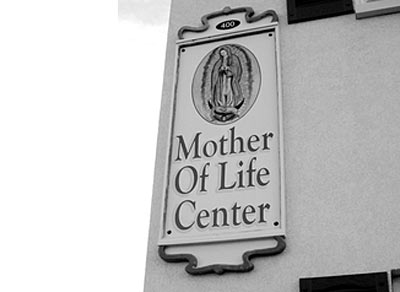Politics
Abortion in Britain: The Case for a New Approach

Britain’s lawmakers have voted to extend scientific research on embryos to allow the mixing of human and animal egg and sperm, to allow lesbians to create children through IVF without the need for a father, and against lowering the 24-week legal limit for abortions
The promises of brave-new-world cures for diseases swung Members of Parliament behind the Human Fertilisation and Embryology Bill. Religious objections were parodied as unjustified interference in the lab.
But the debate on lowering the abortion limit last week merits careful scrutiny by the pro-life groups. It shows what might be possible to achieve in the next few years; and it points to the need for a change in direction.
The move to lower the abortion limit was made by a number of MPs through a series of proposed amendments to the HFE Bill calling for the 24-week legal limit to be lowered. There were four proposals – for 12, 16, 20 and 22 weeks respectively.
The 12 and 16 week amendments were crushed: 71 against 393 and 84 against 387. These were the authentic pro-life votes: Catholics and evangelicals who want to ban abortion, or to make it as rare as possible. Their position is at odds with the vast majority of British MPs, who, reflecting a widespread social consensus, believe abortion should be legal.
The 20 and 22 week votes were still heavily defeated, but the majorities were much lower. The first won 173 against 309 votes, the second 233 against 304. The votes for 20 and 22 weeks included the 70-80 pro-life MPs, but were greatly bolstered by large numbers of Conservatives, including most of the shadow cabinet, who want to see fewer abortions and an end to late-term surgical abortions.
The case for 20 weeks was made by a former nurse and Conservative MP, Nadine Dorries, a telegenic and passionate advocate of an end to late-term abortions. Even though only 1.5 per cent of the UK’s annual 200,000 abortions take place at this stage, they are an increasing source of concern: because some premature babies are viable at this stage the procedure looks much more like infanticide.
Dorries, who is pro-choice and in favor of the morning-after pill becoming more widely available, provoked gasps in the chamber when she described how, as a nurse, she saw botched abortions.
“The first time this happened to me a little boy was aborted into a cardboard bed pan which was thrust into my arms,” she told the Commons. “As I stood and looked in that cardboard bed pan, this little boy was gasping through mucus and amniotic fluid for his breath. I stood with him in a sluice in my arms in a bedpan for seven minutes while he gasped for his breath. A botched abortion which became a live birth then became a death seven minutes later. I knew that at that moment, as I stood with that little boy in my arms, that one day I would have the opportunity to stand and defend babies like him. I thought we were committing that day murder.”
Those like Dorries – mostly Conservatives – remain committed to abortion being legal and available, but argue that advances in fetal viability, and new knowledge of fetal pain mean that science is now on the side of a lower limit. “I believe a baby has rights. Those rights kick in when if that baby were born it would have a chance of life and if it feels pain as part of the abortion,” Dorries argued.
Britain’s 967 Abortion Act introduced fetal viability as the legal cut-off point. Because of the advances in pre-natal medicine over the next decades, in 1990 the upper limit was reduced from 28 to 24 weeks. But this time, the evidence on survival rates is not so clear and the Government was able to argue that the small number of abortions which take place after 20 weeks are often carried out by the most vulnerable women.
But the wind is blowing in favor of a lower limit, and the prospect of a lowering of the limit to 22 or 20 weeks within the next few years is likely. The voting on Tuesday night was skewed by the Government putting pressure on MPs to turn up and vote: most of the Labour MPs, who have a clear majority, simply turned up to vote to keep the current limit as the prime minister, Gordon Brown, told them to. With a Conservative majority after the next election (2009 or 2010), that would be reversed because although Britain prides itself on keeping abortion out of party politics (unlike in the U.S.), Conservatives tend to back attempts to restrict abortion while Labour tends to resist those attempts.
The Conservative party’s leader, David Cameron, knows a reduction in the upper limit would be popular. Poll after poll shows a shift in public opinion against late abortions and in favor of a more restrictive law. This is partly a consequence of Professor Stuart Campbell’s window-on-the-womb ultrasound pictures, which have humanized the unborn child, and partly because of the unease people feel at hospitals fighting to save the lives of “babies” in one ward and ending the lives of “fetuses” in another – especially when the unborn lives are the same age.
Yet the Conservatives do not need the pro-life movement to make a lower limit happen, and prefer to keep their distance from the outright “banners” lest they be accused of eroding the “right to choose”. The fact that this right in British law is extinguished after 24 weeks of pregnancy does not take away the nervousness of many MPs at making this a pro-life versus pro-choice conflict. The spectre of abortion “culture wars”, as in the U.S., haunts the issue.
In other words, although the moral initiative clearly lies now with those who want to restrict abortion, the lower limit will be introduced in the next Parliament for the reasons Nadine Dorries gave, not those given by the feisty Catholic MP Anne Widdecombe.
All of which leaves the pro-life movement facing a choice: whether to continue to concentrate on bringing about a ban, or to take on a new strategy.
The problem with continuing the same strategy is that it will not succeed. Although 16 pro-life groups came together to oppose the HFE Bill in an umbrella campaign called Passion for Life, it made virtually no impact on the media and public opinion.
Unfortunately, to the extent that pro-life campaigns are dominated by Catholic narratives of the personhood of the fetus, they will continue to be dismissed. The only point at which most people are inclined to believe that the unborn have rights is at the moment of viability – which is why the Dorries 20-week campaign is the one that stands the greatest chance of success.
Enter, at this point, the great eighteenth-century slave trade abolitionist, William Wilberforce.
The analogy has not been lost on some of the pro-life MPs. Edward Leigh, a prominent Catholic Conservative who called for the time limit to be cut to 12 weeks, noted on Tuesday night: “William Wilberforce fought against entrenched opposition, he fought against moneyed interests and a world view that some people were not fully human. We know that we are up against it tonight. We know that the pro-choice lobby dominates the establishment, we know that we are talking about a multimillion-pound industry.”
But they should take their cue from Wilberforce’s cry in 1771, after the umpteenth failure of his slave trade abolition bill.
“It is on the general impression and feeling of the nation that we must rely,” Wilberforce told his followers, “rather than on the political conscience of the House of Commons”.
That marked the moment when the anti-slave trade movement embarked on its tireless efforts to change the law from the bottom up. Through stories, town-hall meetings, petitions and local campaigns, the movement gathered irresistible momentum. People began to wake up to the humanity of the slaves, and the tragedy of the slave condition. What was considered an expendable sacrifice for the sake of other goods – prosperity, trade, and so on – became an insuperable moral obstacle.
As long as the pro-life campaign in Britain stays on the terrain of a clash of rights, pursuing a legal ban, it will not succeed.
The discourse needs to change to one that sees abortion as a problem for everyone that requires a solution. Abortion is bad for the woman who has it, bad for the people with whom she is in relationship, bad for society as a whole. Abortion benefits no one.
The question is how the pro-life movement can reduce abortion while it is legal – although naturally it should support legal restrictions – through measures that encourage and enable women to bring their children to term. Huge efforts in the UK go into “preventing” abortion through making contraception widely available, yet there are 200,000 abortions a year and rising.
The British pro-life movement would do well to look to the United States, where the stalemate introduced by Roe v. Wade has led to the creation of hundreds of crisis pregnancy centers and “houses of hospitality” for expectant mothers, such as Maggie’s Place in New York. There is even imaginative new thinking within the Democratic party: Democrats for Life, for example, have interesting ideas.
But whatever it comes up with, such a movement would encourage British society to accept that abortion is a problem that requires a common solution. Let the movement begin. Parliament will come in behind, in its own good time.
By AT 07.11.08 05:25PM Not Rated
It’s a shame that the realities of abortion cannot be apart of pre-teen/teen ‘sex education.’ It begins with the culture. The challenge with Britain will be weaving the concept of ‘life’ into the underlying structure of society and playing offense rather than defense.









By Stratford AT 05.28.08 07:15PM Not Rated
Austen’s coverage of this issue has been great. Also worth mentioning is the fact that increasing numbers of British women are using abortion as a method of birth control - four, five or more abortions. One important point he makes is about viability, which is putting science on the side of a lower limit. I wanted to ask, what about artificial wombs? It seems likely in a few years an embryo could be carried to term outside a woman’s body altogether - whatever we think about that as a procedure, it essentially means that a foetus becomes ‘viable’ or at least can survive from zero months. At that point a major part of the pro-abortion argument collapses completely.